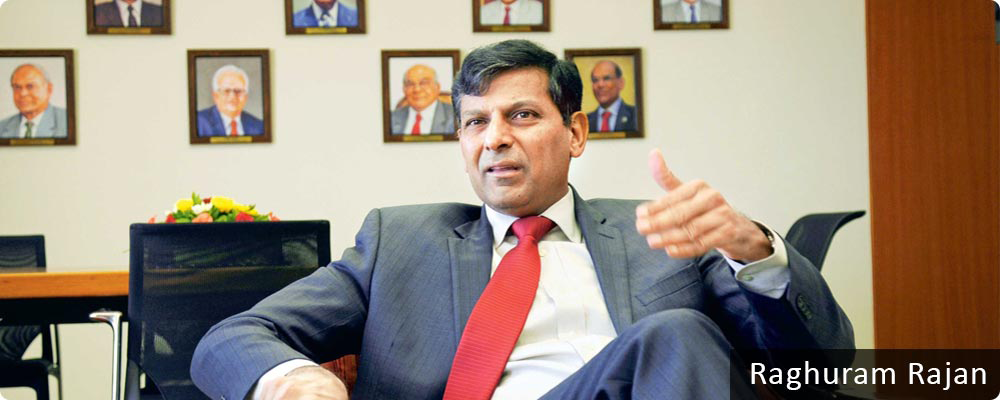Markets In June 2016: Movers & Shakers Of The Month (Part 1/3)
July 08, 2016
|
For the first time ever, we bring to you an exclusive monthly newsletter covering all major events in June 2016 that helped the Indian equity markets witness its ups and downs. Have a look at the Part 1/3 of our monthly newsletter and enjoy the seen and the unseen aspects of the news which actually mattered:
Rexit
- The weekend email by Indian Central Bank Governor Raghuram Rajan to his colleagues conveying a sense of finality on his intention to not to seek a second term at the Reserve Bank of India (RBI), came as a surprise to all. Everyone expected the stock market to react negatively on monday (20th June, 2016), as all believed that Rajan’s bold policy decisions were instrumental in stabilizing the rupee and controlling the inflation.
- Considered as one of the best central bank governors in the world, almost all analysts and brokerage houses expected to witness a near-term downward risk in the stock and especially the currency market. ‘Rexit’ jitters were attributed to the net outflow by FPIs in equities, which stood at Rs. 528 crores and that from the debt market, to the tune of a whopping Rs. 2310 crores, making an overall net selling of Rs. 2837 crores by the overseas investors. It was the highest single day outflow so far in FY2016.
- However, the domestic institutions (DIIs) came to the rescue purchasing equities worth more than Rs. 724 crores, surpassing the net outflow by the FPIs and thereby helping the stock market move higher (241.01 points in the green), against everyone’s anticipation of a red closing! But, the debt markets weren’t as lucky, as the selloff by overseas investors there turned out to be higher than the purchases made by DIIs. The rupee ended lower by 23 paisa to close at Rs. 67.31 against the US Dollar.
- Just for your information, FPIs are estimated to own around 20% of the shares of all the listed companies available for trading in India. But, that number is just 7-8% for DIIs, cementing the fact that FPIs remain in a much stronger position to drive the movement of the Indian stock markets.
-
Also, the next RBI Governor is expected to one of the following four shortlisted candidates:
- Urjit Patel, current RBI Deputy Governor
- Rakesh Mohan, former Deputy Governor
- Subir Gokarn, former Deputy Governor
- Arundhati Bhattacharya, current State Bank of India Chairman
It will be interesting to see, which one of the above mentioned candidates would replace Rajan, in a time when the country is striving to boost its growth amidst a subdued and patchy global environment. One has to keep in mind the growth of our economy is not a one man phenomenon. Investors might temporarily pull out of our markets, but they have to come back as India offers them growth opportunities that almost no other country offers, not China, not Japan or not even the European economies which are in turmoil as of now.
FDI Changes
- Perceived by many as a move to blunt the hangover effects of the Central Bank Governor, Raghuram Rajan’s unexpected exit decision from his office, the Government of India, during the very next trading session launched a Foreign Direct Investment (FDI) bonanza, allowing 100% investment by overseas investors in a major chunk of sectors. However, it can also be said that bringing foreign investment to India has so far been the theme of the Narendra Modi led NDA government. The first signs of this were evident when the FDI was opened in the Insurance and Pension Funds sectors. This was followed by the agreement by the Japanese to invest in our country’s first to be formed bullet train and then by the Gulf nations for showing interest in our Aviation and Refining sectors.
-
Have a look at the various FDI liberalizations that the Government of India announced recently and what do they mean exactly:
-
1) Defence:
Foreign investors will now be allowed to own up to 100% equity in the local defense companies, of which investments up to 49% will be through the automatic approval route and those beyond 49% will only be though government approval. This is sensible considering it involves national security.
Also, the condition of access to ‘state-of-art’ technology in the country has been done away with, and cases of investment beyond 49% through approval will now require just access to ‘modern’ technology.
Under the previous rules, foreign Original Equipment Manufacturers (OEMs) had to compulsorily form joint ventures with domestic firms if they wanted to establish manufacturing bases in India. But now, they can independently plan and implement operations in India.
-
2) Aviation & Brownfield Airports:
The new policy allows 49% FDI through the automatic approval route and 100% after the government approval for the airliner industry. Since aviation is a low-margin business, only those with strong cash reserves and the right business model can survive. The Indian carriers fall into none of these categories. Even though SpiceJet, GoAir, Jet and say Air India for that matter, recently turned profitable, it was mainly due to the fall in fuel prices. Only IndiGo, has been consistently profitable due to its superior and efficient business model. These Indian airlines would be highly benefitted by investments from their cash-rich Gulf peers like Etihad, Emirates, Qatar, etc.
In case of Brownfield Airports, the government has now permitted 100% FDI so as to try and support our local low-cost carriers with low-cost airports which will now be a reality via foreign investment. Earlier, smaller airports were, well still are, starved of investments, a scenario which is expected to now change.
-
3) Pharmaceutical:
74% FDI will now be permitted under automatic approval route for Brownfield pharmaceutical units and those beyond 74% will require government approval. This will enable a possibility of more acquisitions of Indian pharma SMEs by foreign MNCs. They will be able to tap the Indian generic pharmaceutical market to challenge their Indian peers with relatively deeper coffers to burn. This change in the policy will also allow private equity players to fund the ever growing Indian pharma projects.
-
4) Food Retail:
This is one of the most ‘indirectly’ effective FDI changes, which will enable 100% foreign investment in the Food Retail segment, but, only through the government approval route. This could potentially attract retail giants like WalMart, Costco, Target Corporation, etc to enter India and have domestic sourcing of food items, thereby helping farmers obtain a better price on their produce. The various eGrocers can also attract fresh funding, since food eCommerce is now an open game once again.
-
5) Single brand Retail:
Local sourcing norms have been waived for 3 years with an option for extending the waiver by another 5 years. This will attract the likes of Apple Inc to set up their stores in India. The idea is that at some point, they will start local sourcing to keep some costs down which will in turn benefit Indian SMEs.
-
Apart from the above mentioned sectors, Broadcast Carriage (100% FDI through automatic approval route), Private Security Agencies (49% FDI through automatic approval route and beyond 49% till 74% via government approval) and Animal Husbandry (100% FDI allowed, but now with no ‘controlled’ clauses).
These changes now make India, one of the most open economies in the world to invest in.
Stay tuned for the Part 2/3 which will be covering the "Monsoon Onset" and its implications on our economy.




